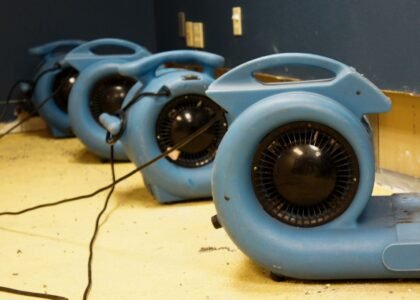When water damage occurs, it can be a stressful experience. Water can quickly seep into walls, floors, and other parts of a building. If not handled properly, this moisture can cause bigger problems like mold growth or damage to the building’s structure. That is why understanding the process of drying is very important.
What is Structural Drying?
Structural drying is a specialized process used to remove moisture from building materials after a water event. It goes beyond simply drying surfaces. The goal is to dry out hidden moisture within materials like wood, drywall, and concrete. This deep drying helps to prevent long-term damage and keeps the building safe and sound.
The Science Behind Effective Drying
Effective drying relies on controlling air movement, temperature, and humidity. Specialized equipment is used to create an environment where moisture can be drawn out of materials. For example, warm, dry air is often used to absorb moisture, which is then removed from the area by dehumidifiers. This careful control ensures that materials dry evenly and completely.
Key Steps in Structural Drying
A professional approach to structural drying follows several important steps to ensure a thorough and effective process.
Inspection and Assessment
First, a careful inspection is performed to find all areas affected by water. Special tools are used to measure moisture levels, even in places that look dry. This step helps to create a clear plan for drying.
Water Extraction
Before drying can begin, as much standing water as possible is removed. Powerful pumps and vacuums are used for this. Removing the bulk of the water speeds up the drying process significantly.
Drying Equipment Placement
After water is extracted, professional drying equipment is carefully placed. This includes industrial-strength air movers, which create airflow, and dehumidifiers, which remove moisture from the air. The right placement of this equipment is key to efficient drying.
Monitoring and Verification
Throughout the drying process, moisture levels are regularly checked. This monitoring ensures that materials are drying correctly. Once moisture levels return to normal, the drying process is complete, and the structure is verified as dry.
Why Professional Help Matters for Structural Drying Solutions Austin
For comprehensive Structural Drying Solutions Austin, professional assistance is essential. Experts have the right equipment and knowledge to handle all types of water damage. They understand how different materials react to water and how to dry them without causing further harm. Trying to dry a building yourself often misses hidden moisture, which can lead to future issues that are more costly to fix. Professionals ensure that all affected areas are properly dried and restored. This approach helps protect the integrity of the property and its value.




